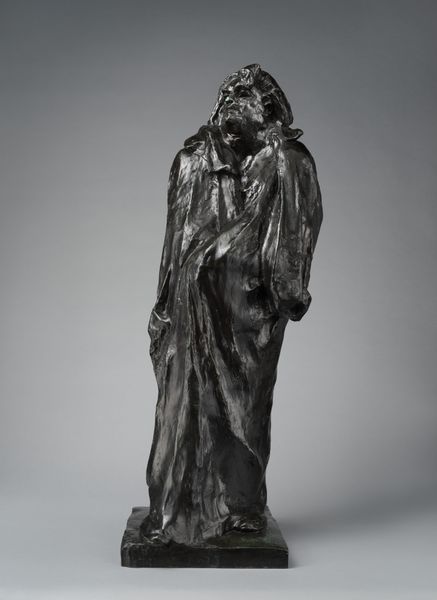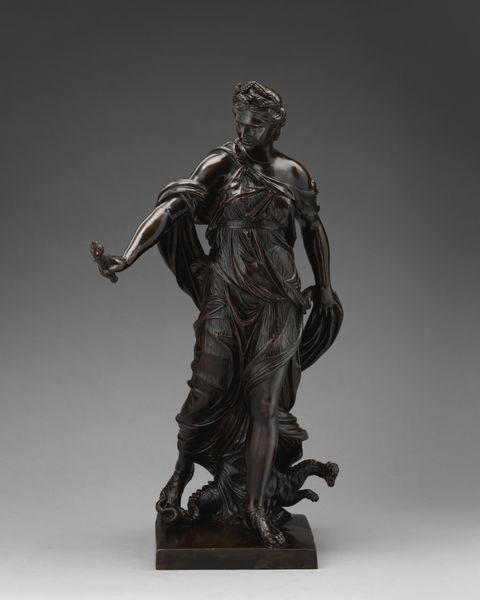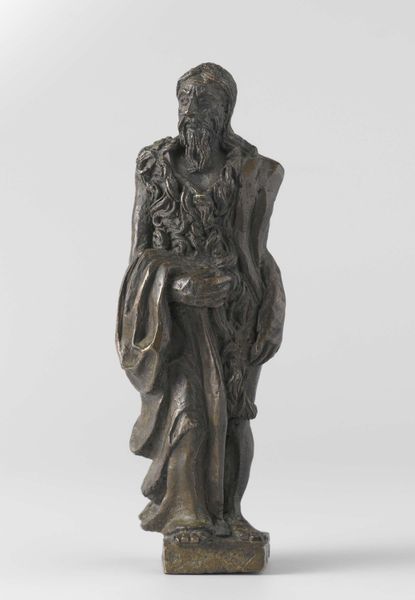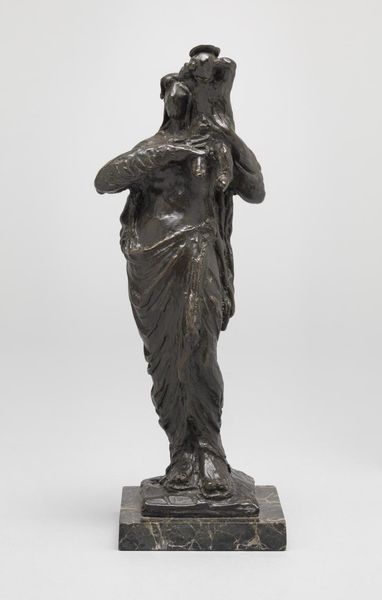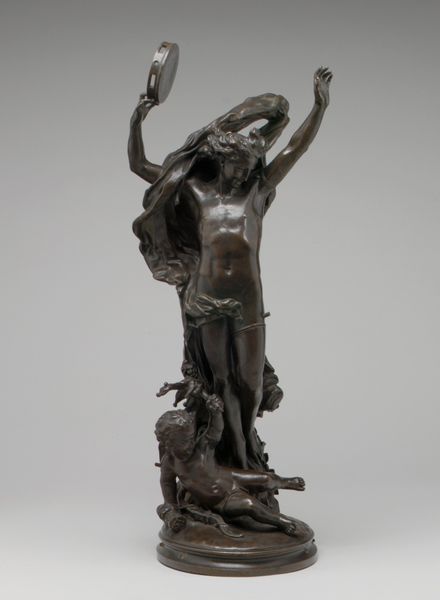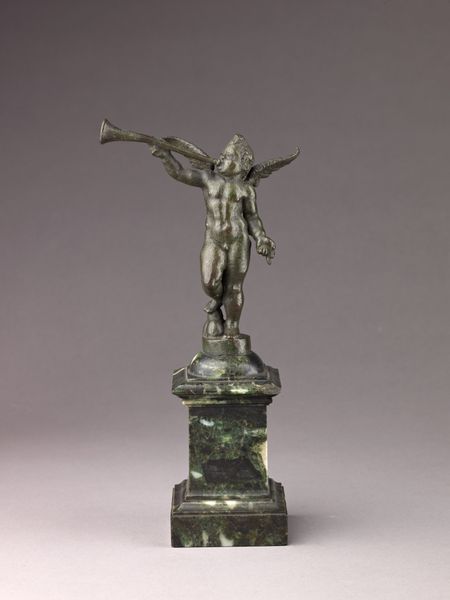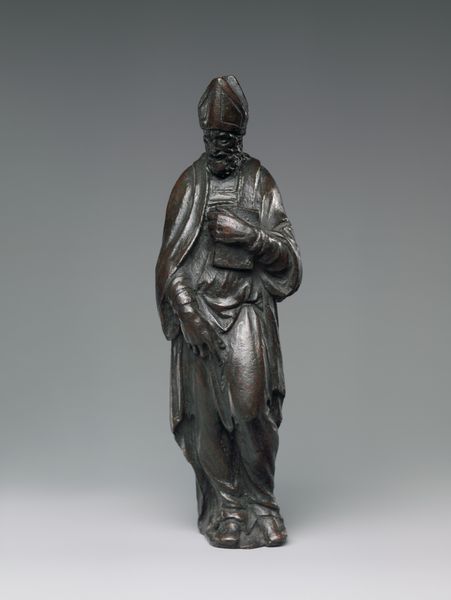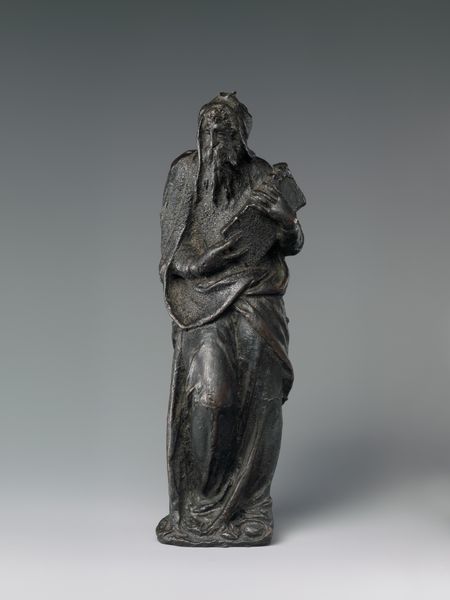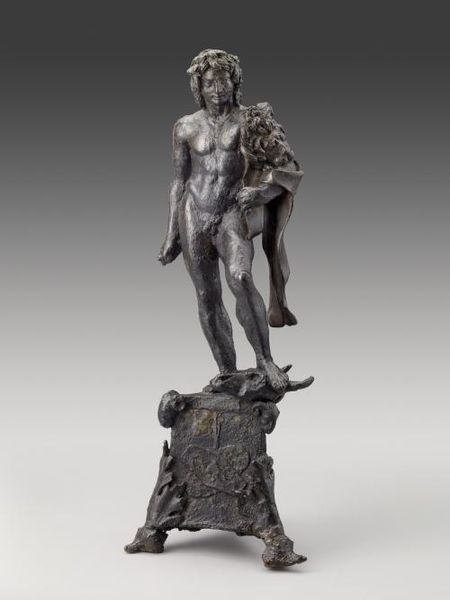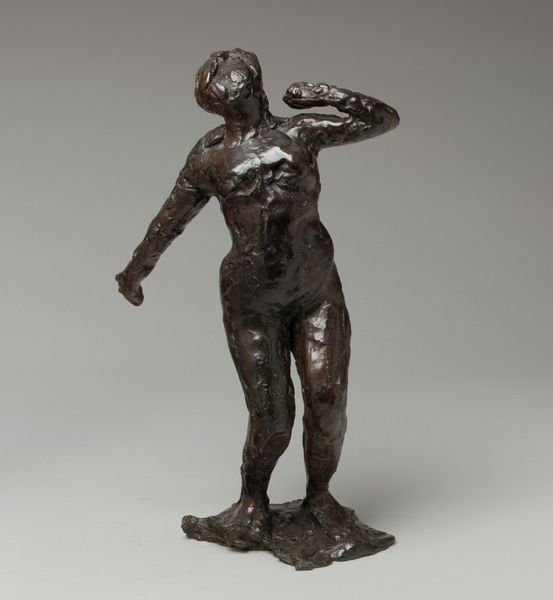
bronze, sculpture
#
portrait
#
statue
#
sculpture
#
bronze
#
figuration
#
11_renaissance
#
sculpture
#
decorative-art
#
italian-renaissance
#
statue
Dimensions: Overall (confirmed): 18 1/2 × 10 × 5 in. (47 × 25.4 × 12.7 cm)
Copyright: Public Domain
Curator: Bronze has such weight and permanence, doesn't it? Immediately makes you think of things built to last…but does time actually care? Editor: Especially as seen here. This piece is titled "Chronos", dating roughly from 1530 to 1565. It's attributed to Agostino Zoppo, or his circle. So we're already in conversation with the ephemerality of history, right? Attributed, rather than certain. Curator: Oh, absolutely. It makes you consider who gets remembered, doesn't it? Even as the bronze suggests immortality, the title itself and that gesture – the figure looking almost concerned or uncertain, hand to their chest, I think it is incredibly compelling. Are we making our mark? Editor: Exactly! This small-scale sculpture of Chronos, or Father Time, is such a curious commentary on fame, especially for its time. Statues usually functioned to memorialize a patron, rulers, the politically important, but, in contrast to this, Zoppo invites the consideration of mortality. Curator: There's almost something melancholic in the bronze finish itself, isn't there? Not golden and celebratory, but deep, weathered. Time worn in the color of it. Editor: Yes, its creation was, no doubt, also intended to reflect a specific vision, and, furthermore, reflect contemporary sociopolitical factors as we can see by comparison to similar artworks and other historical factors Curator: I’d love to know more about why Zoppo and how he conceived it! To depict time like this, weary and questioning, it just feels incredibly modern somehow, timeless. I find this more striking given this Renaissance Italian origins where the goal was to show beauty rather than the dark sides. Editor: Its current home in the Met is also interesting; it moves it away from being an accoutrement of a royal court to something seen and experienced in public – which also shapes and frames how we perceive the meaning it. Museums today play a huge role in shaping what art continues to be important. Curator: And for all the art historical context, what I’ll really take away is that lingering feeling that I need to use my time wisely. Maybe be a little more brave, even! Editor: And perhaps recognize that much of art history as a history that often privileges specific views.
Comments
No comments
Be the first to comment and join the conversation on the ultimate creative platform.

